It’s a fine May morning, and until a couple of minutes ago, the search for ornate box turtles here at the Conservancy’s Nachusa Grasslands Preserve in Central Illinois was going extremely well. We are up to 16 turtles on the morning so far.
Unfortunately, progress has come to a halt because the field assistants found the remains of something that might once have been a bison. And now they’re rolling in it. With glee.
“Well,” says John Rucker, as he surveys his mucky, happy charges. “Getting that smell out of their coats is going to be a project.”
Rucker gives a few quick commands and his field assistants – four female Boykin spaniels – finish their impromptu break, and get back to the job at hand: namely, tracking and retrieving every ornate box turtle they can find in these restored and remnant native prairies.
Yes, retrieving. I expected the tracking. The retrieving part came as a bit of a shock.
“The dogs find more ornates in two or three hours than we’d probably find in a whole week or even longer,” says Matt Allender, the team leader for the University of Illinois scientists at Nachusa this week, many of whom are grad students, doctoral candidates and post docs working on projects related to reptile health. “We couldn’t do this project without John and the turtle dogs. They’re part of the team.”
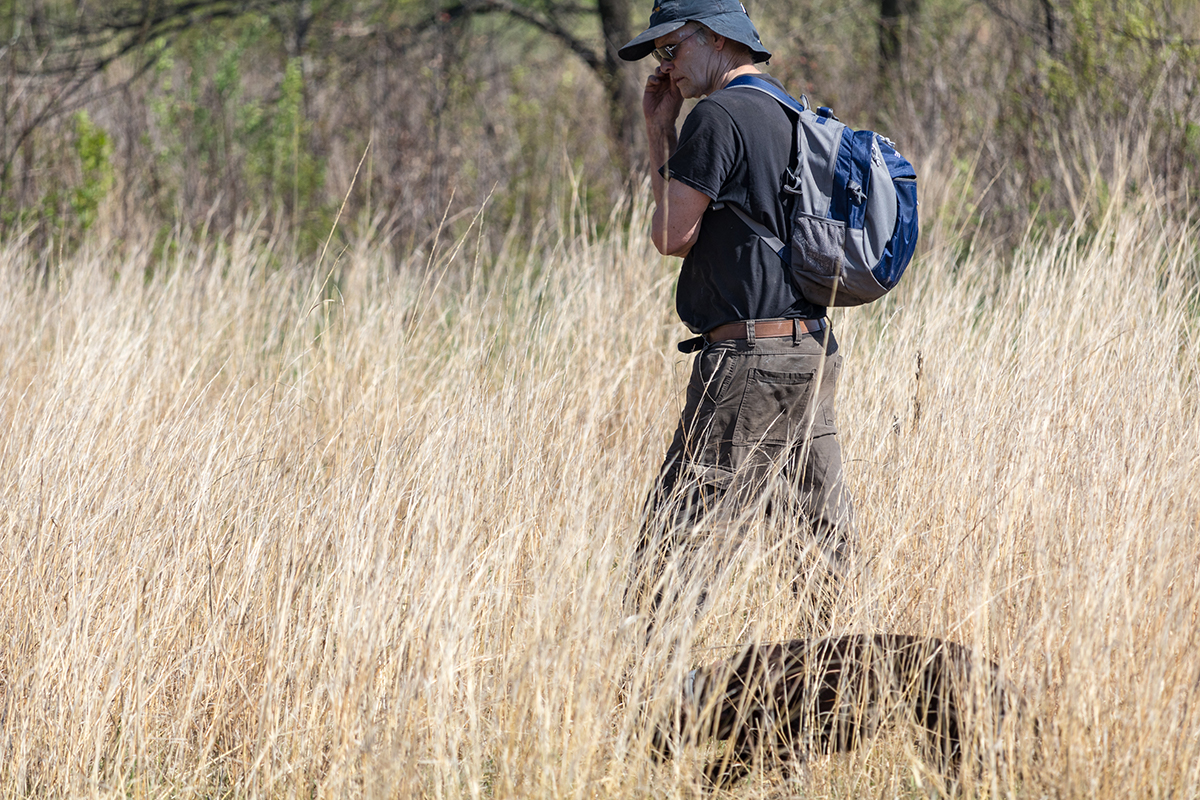
These medium-sized spaniels with their amber eyes and thick, brown coats that shine like copper in the sunshine were originally bred in South Carolina for bird hunting. But the breed also produces, as Rucker discovered by accident some years ago, a few special individuals who turn out to make excellent, well, turtle retrievers.
“They have very soft mouths,” Rucker explains as Jenny Wren (who has been finding the majority of turtles this morning) lopes up with the latest ornate find, which will be turtle number 19 by my count.
Jenny sits obediently at John’s feet, holding up her prize – like it’s some kind of reptilian tennis ball — and I can see that her tongue is between her bottom teeth and the turtle’s plastron (the bottom of its shell). She’s holding the ornate so lightly, I don’t feel any resistance when I slip it from her mouth. And the turtle shell is not even slobbery like a tennis ball would be.
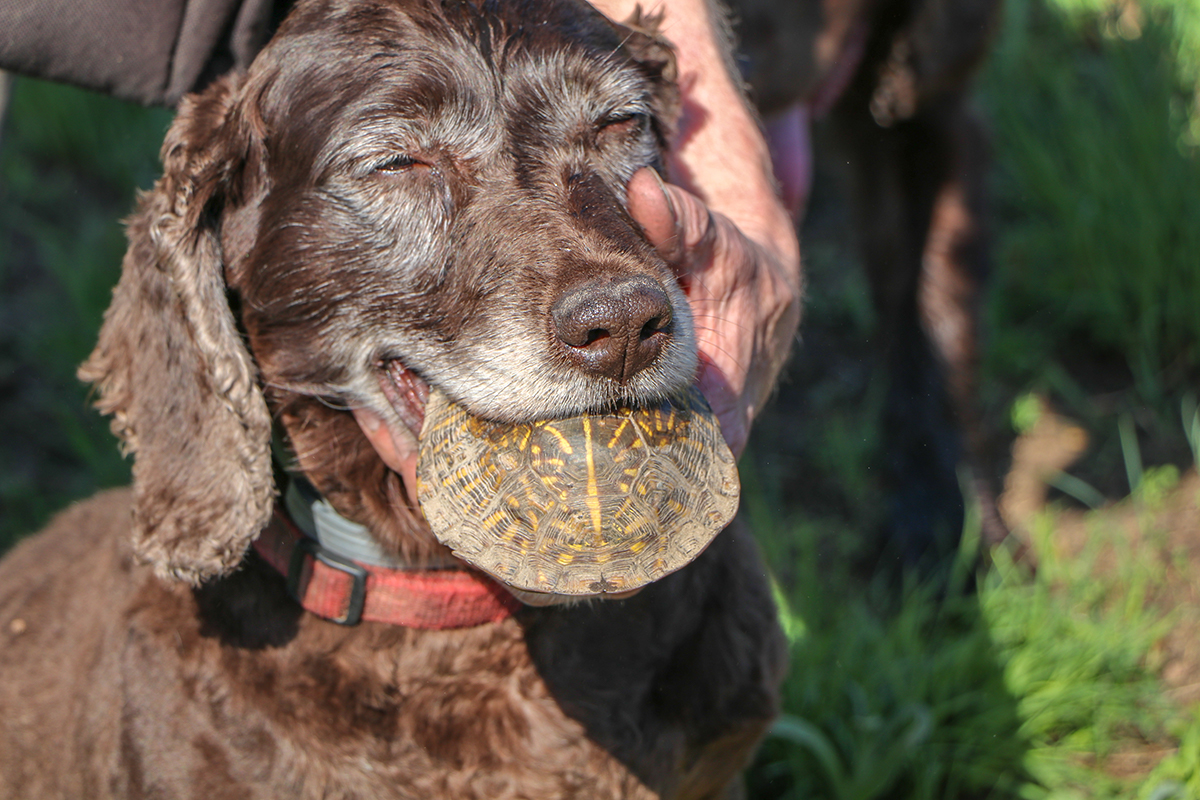
“I have the turtle,” I say to one of the nearby scientists who is busy logging the exact GPS coordinates where Jenny Wren first found the turtle. It’s important to record the location precisely so the scientists, once they finish their tests, can return the turtles (by human hand this time) to the exact same place they were originally found.
“See?” Rucker says as he bends down to pet and praise Jenny. “The dogs are very gentle and they carry the turtles without injuring them. Ornates, blandings, Eastern box turtles, wood turtles, they can track and retrieve them all.”
Ornate box turtles, which tend to grow to around five to seven inches in length, are known for their beautiful backs (the carapace). To me, their shells look like a night sky full of yellow starbursts. They are true box turtles – one of the few turtles capable of completely sealing themselves inside their shells for protection from predators.
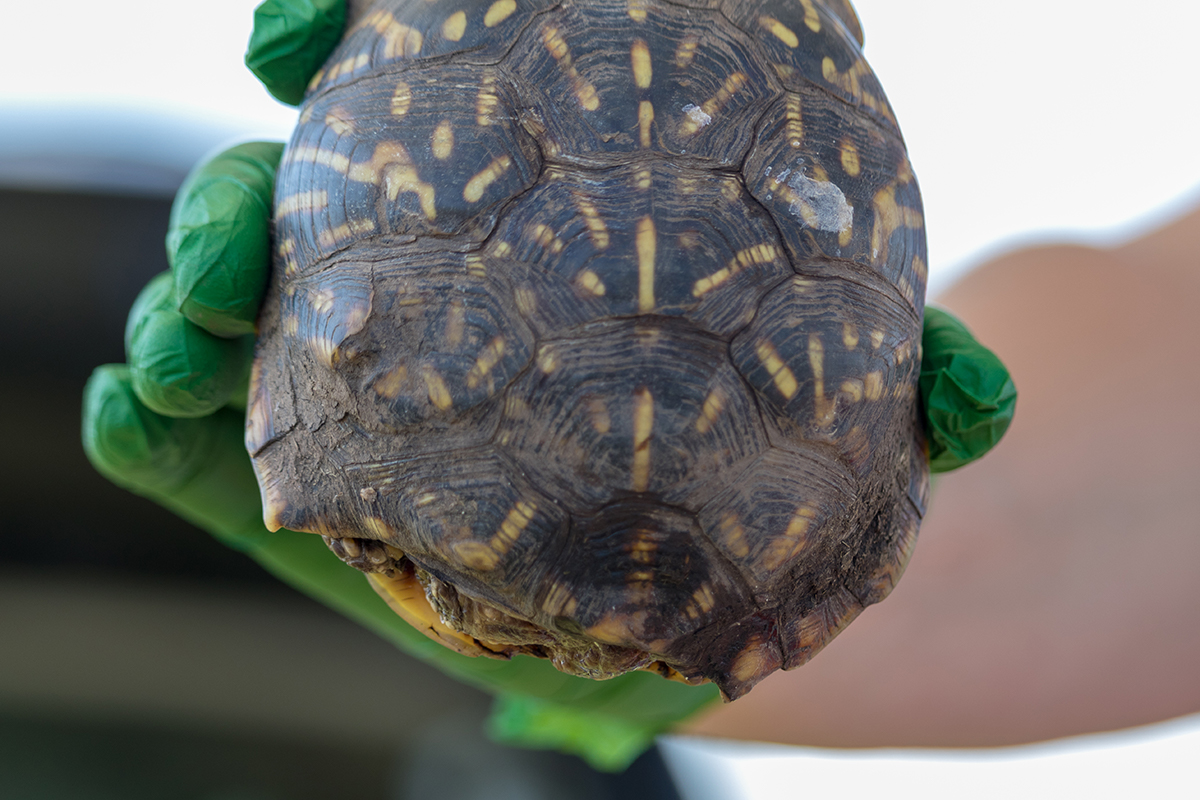
Which helps protect the adult turtles from, say, raccoons and badgers, but does little to thwart farm machinery and cars. The conversion of native Illinois prairie to farmland and pasture is one of the main reasons ornates are listed as a threatened species in Illinois.
Nachusa Grasslands has several populations of ornates, but Bill Kleiman, the preserve manager, would like to know more about how healthy and viable they are. Are there enough turtles of different ages to sustain ornates on the preserve into the foreseeable future? Are they healthy? Diseased? Injured? He needs to know more to inform the way the preserve is managed.
The bottom line, he says, is that “we want a lot more turtles here, and to make that possible, we need to understand many different aspects of our current population.”
It’s that need for more data – more evidence to inform the science behind the Preserve’s ongoing restoration and management — that brings Allender and his crew, and John Rucker and his spaniels to Nachusa this week. The scientists have set up a temporary field station under a tan canvas tent where they’ll be assessing all the turtles they collect.
Honestly, the set up – with its colorful canvas camp chairs and folding tables covered with scientific instruments — looks like a cross between a high-tech lab and a tailgate party. And as I watch the scientists go to work on the specimens they’ve collected this morning (22 by my last count), I keep thinking it’s a little like all those stories people tell about alien abductions. Only with turtles.
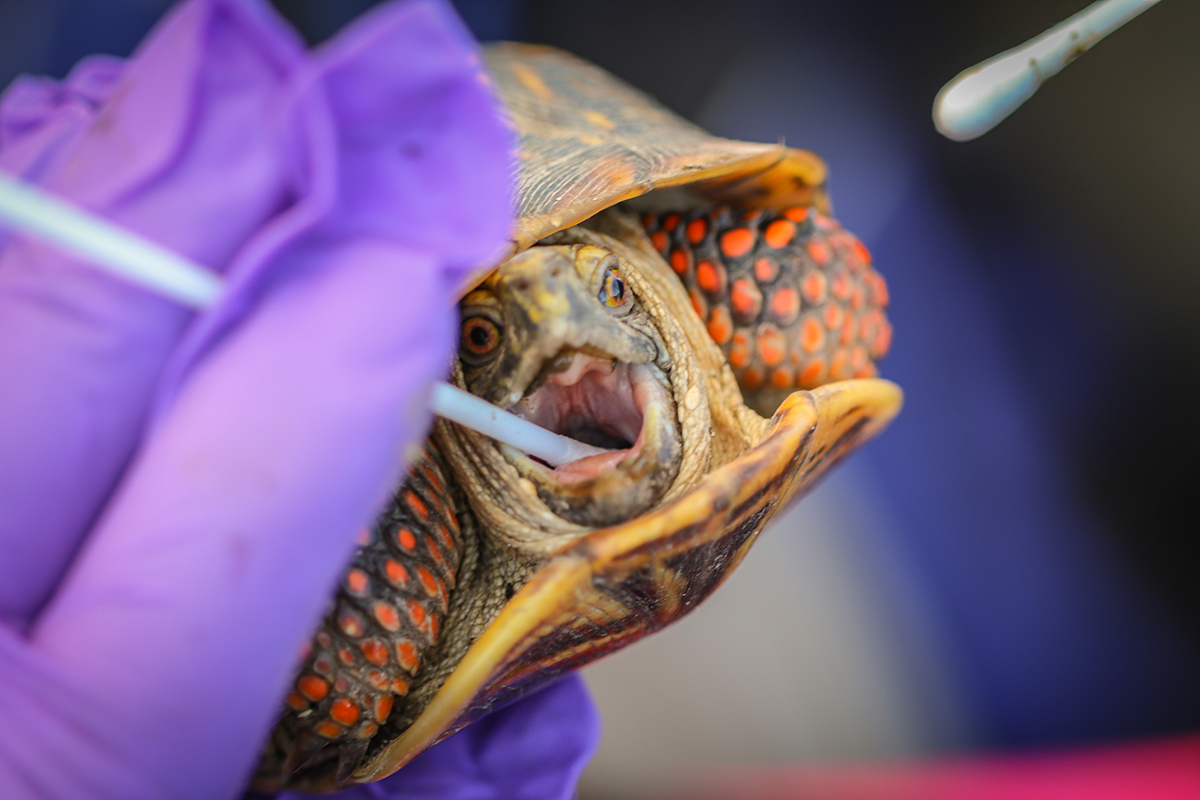
There are tackle boxes full of test tubes and slides, selections of syringes for drawing turtle blood, pipettes, cotton-tipped swabs, laser thermometers, electronic scales for gathering weight data, and even a portable doppler monitor. Most commonly used to monitor human fetal heart rates, the monitor also works great for monitoring ornate turtle heart rates. The scientists are looking in turtle eyes and down turtle throats, listening to their hearts, taking their temperatures and just generally giving each ornate a thorough – and thoroughly recorded – check up.
Over the coming days, weeks and months, they’ll be analyzing the blood they’ve taken and sequencing the DNA they’ve collected to learn more about the health and genetic makeup of the ornate populations here at Nachusa.
The thing is, all of this technology – all of the gear and potential – is useless without turtles to use it on. After all, notes Allender, “it’s hard to assess the health of turtles when you can’t actually find any.”
And to find them, the scientists need John Rucker and his turtle dogs.
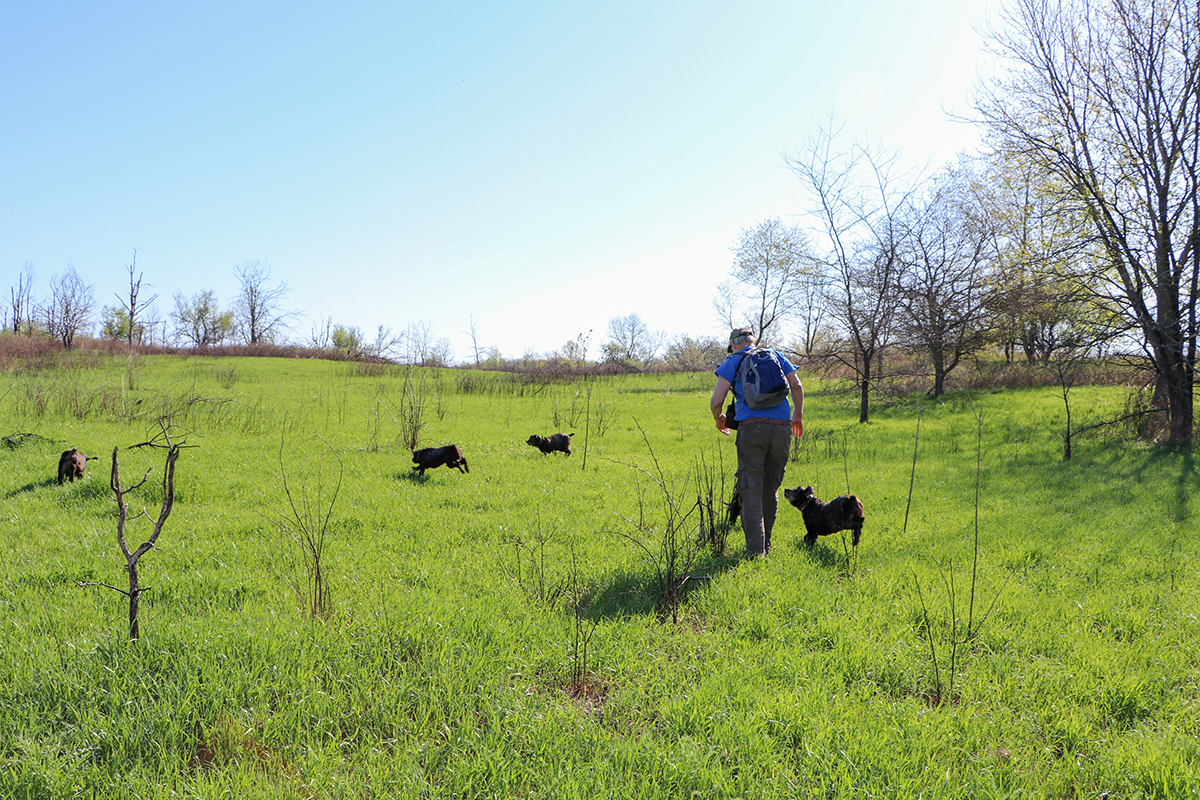
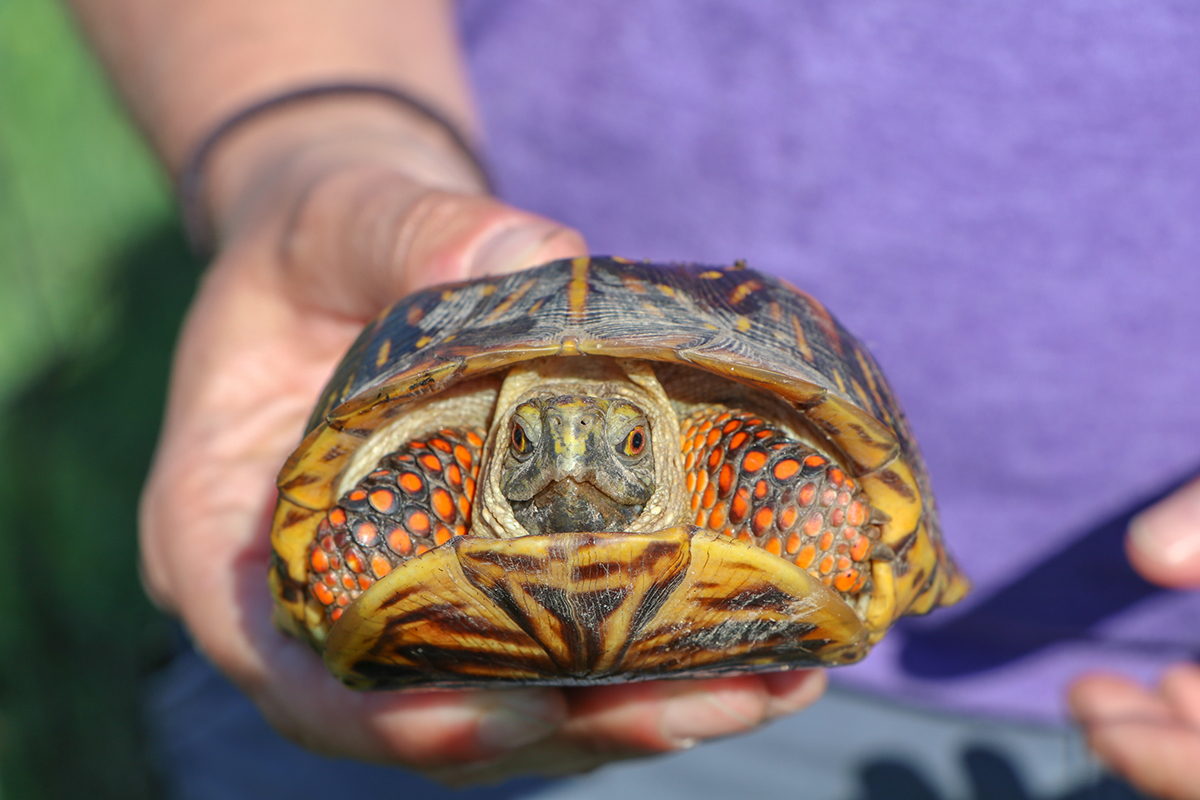
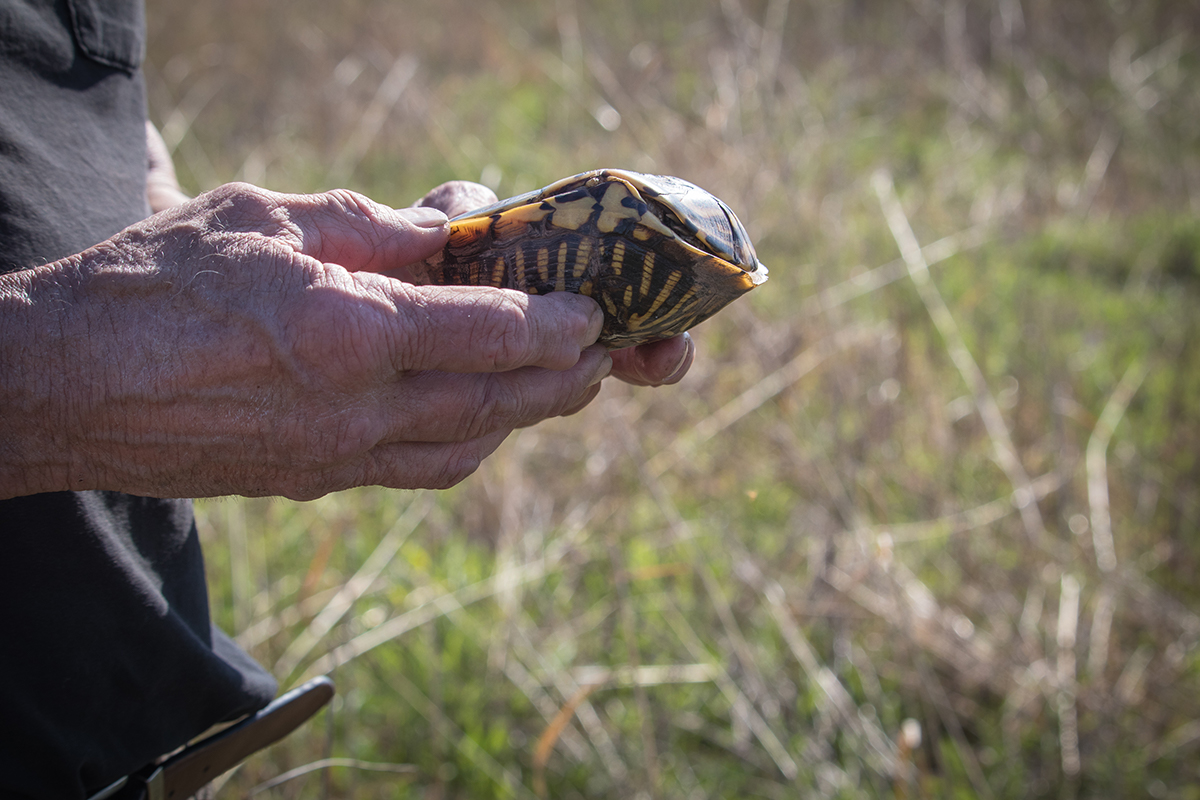
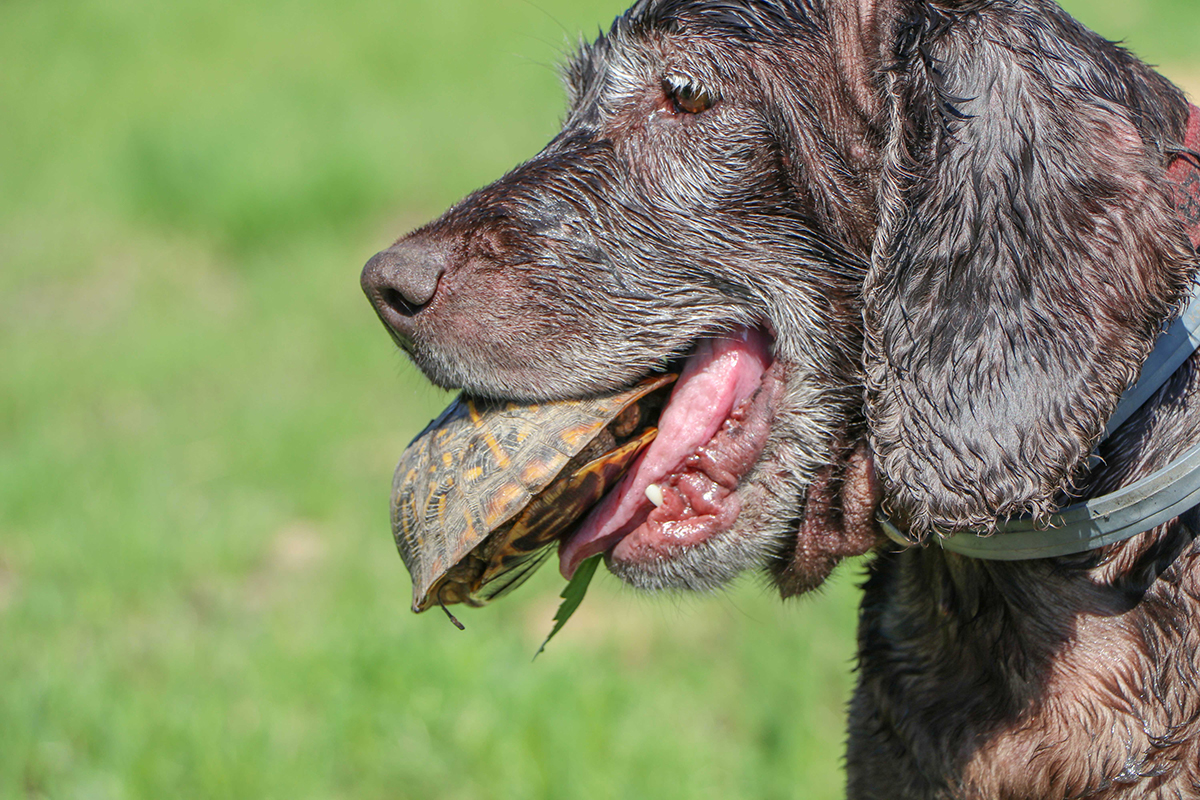
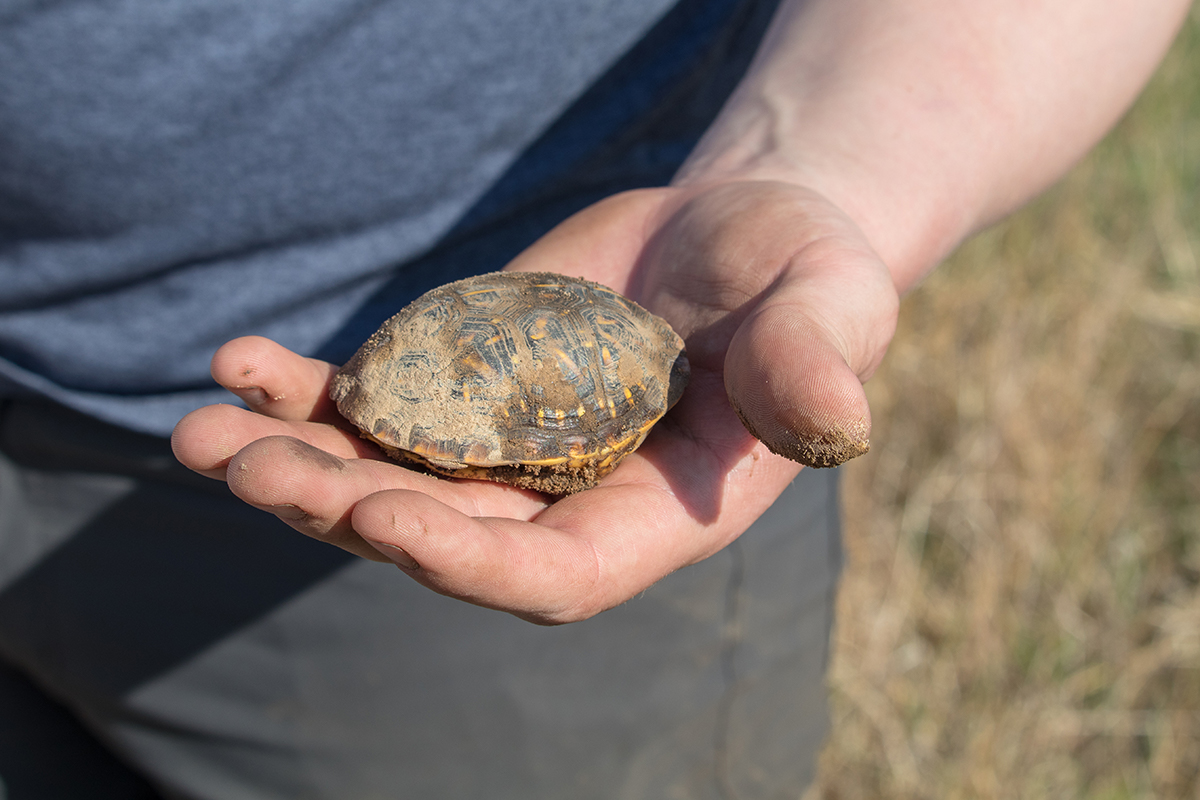
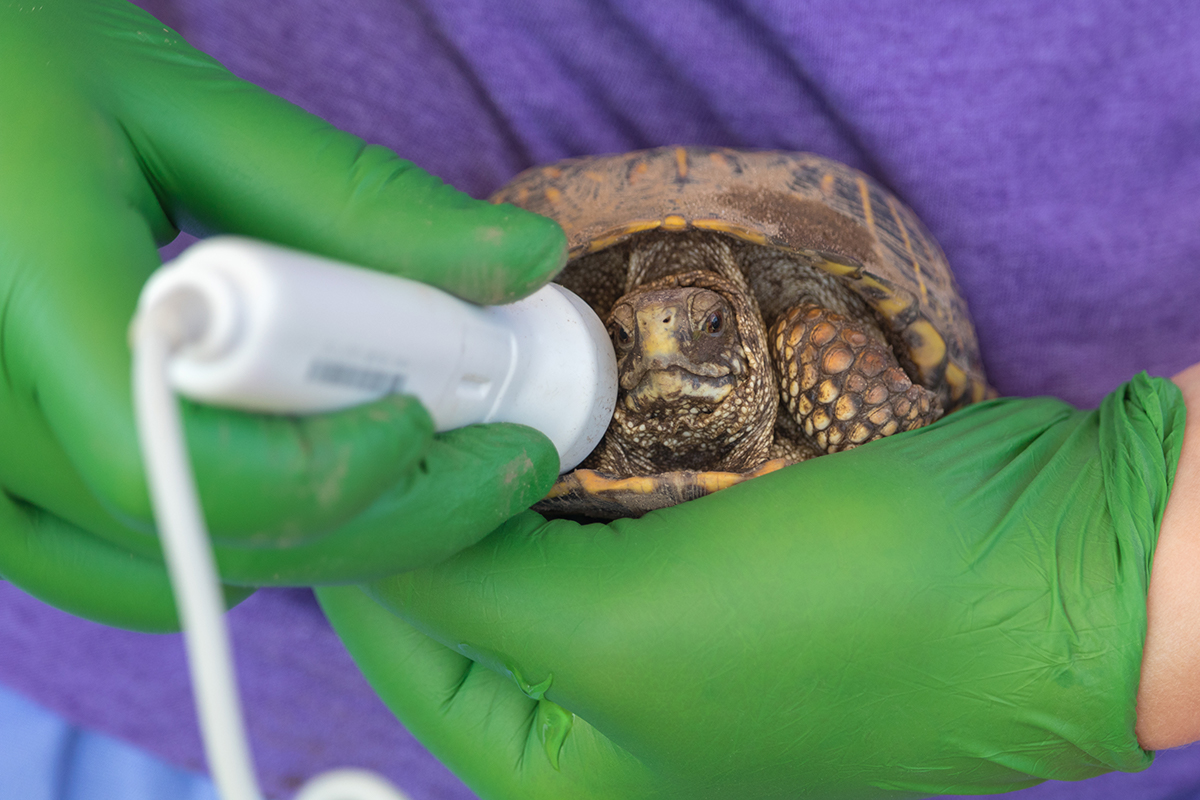
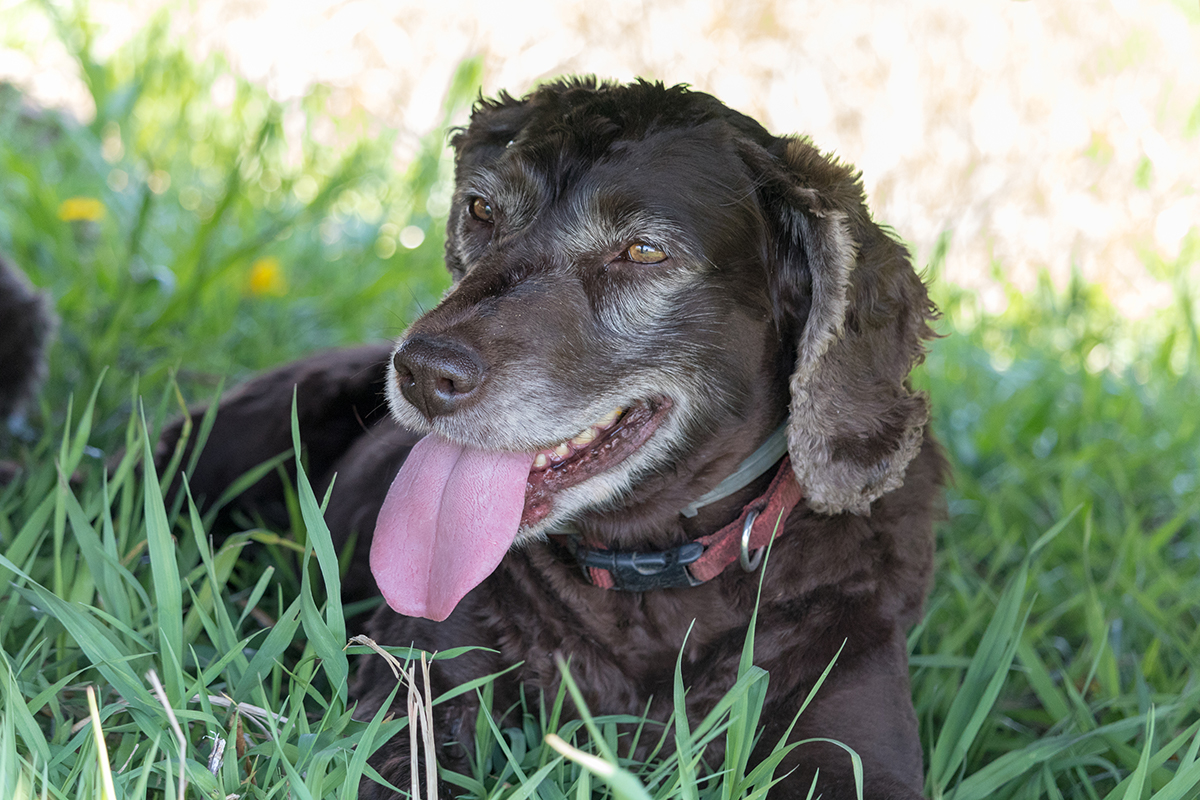
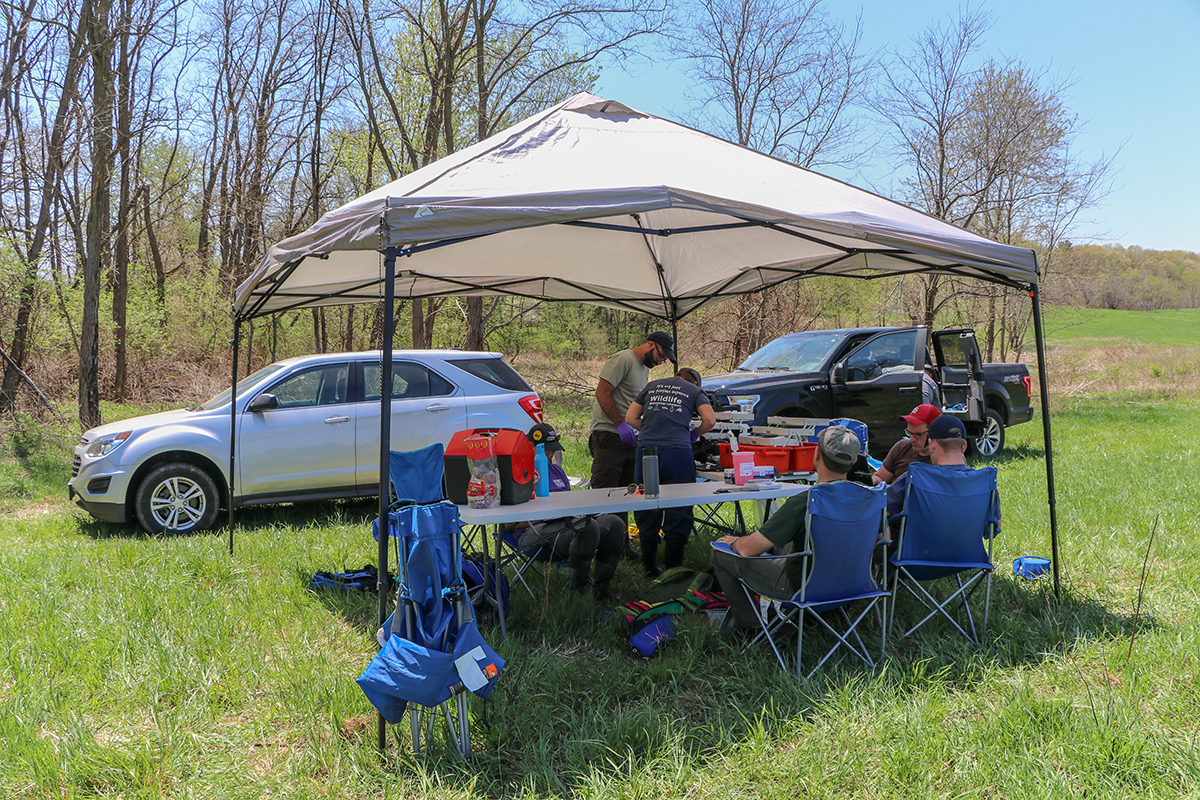
That’s the beauty of my day with the turtle dogs at Nachusa – even as field science becomes more and more high tech with portable DNA sequencers and fetal heart rate monitors with transducers small enough to fit under an ornate box turtle’s shell, there’s still nothing like muddy boots canine-assisted field science to get the job done.
Because, ultimately, it’s not just about the turtles. It’s about what the ornate box turtle populations at Nachusa Grasslands signal about the health of the preserve overall.
“We need to understand the turtles,” Kleiman explains, “because they are such a signature prairie species. If we have healthy population numbers, with many different ages of individual turtles, then we know that our prairie – our remnants and restored prairies – are functioning the way they’re supposed to. The turtles help us know if we’re succeeding or failing.”
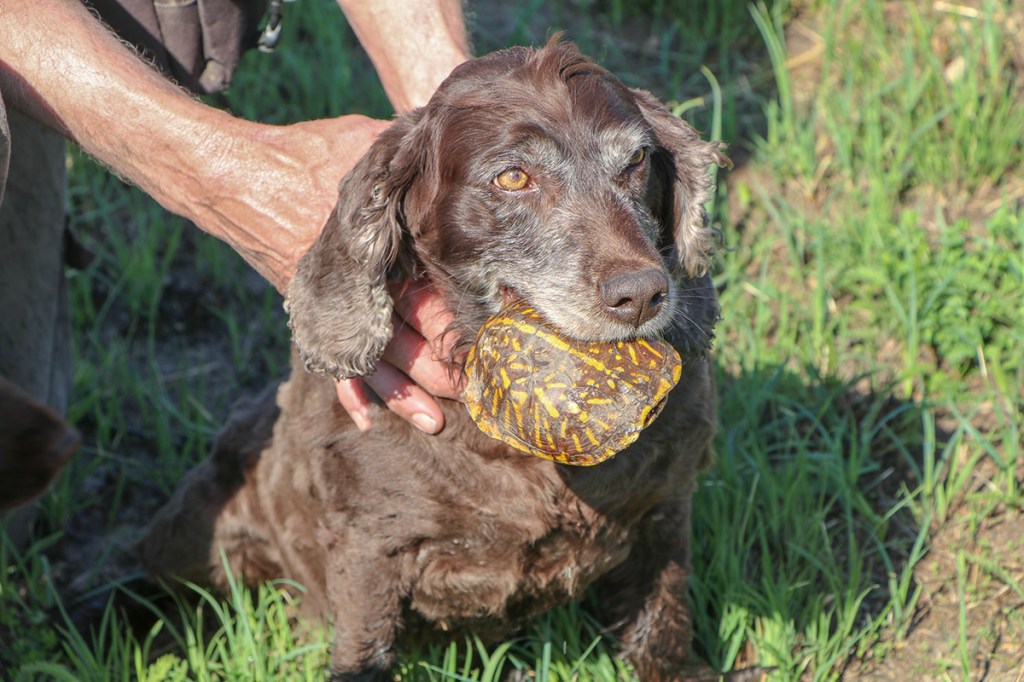



Bird dogs can be good turtle finders, perhaps because birds did evolve from reptiles. I had a Brittany that was good on grouse, woodcock, pheasants, and box turtles. Friends of mine also had bird dogs that liked to point box turtles.
This is so awesome! Dogs are becoming more and more necessary for conservation efforts. They are so low impact and successful at finding their quarry that I hope they are used even more often! Nachusa is a grand place to visit and is the perfect model for other prairie conservation projects!
I have one as well. It is Half Cocker and half King Charles, she found nine on one 2 mile hike in Blacksburg , VA. She is so proud:)
That is so fascinating and great that you are working to note the number of box turtles on your preserve, as well as checking them to see how healthy the pop. is. The most amazing aspect of your work is the turtle dogs! One might guess that dogs are the heroes here!
Simply Fantastic!!
This is disturbing to me on many levels. The image of the turtle in the dogs mouth….not good. Although you say these dogs are gentle, there is the possibility that the turtles could be harmed. Probing them for experimentation ? How about we just leave them in their natural environment?
As a supporter of Nature Conservancy, I am not sure I want to support this experimentation. I happen to love turtles !!
From the article it appears none of the dog-mouthed turtles were harmed. As for the tests they performed on the turtles, I would think most are pretty necessary (even if they seem excessive) to understand the health of the population. Knowing the health and diversity of the turtle population is key to better managing and improving the land at Nachusa (and elsewhere).
If been doing that on my property for a couple of years now. Just as a hobby with my dogs who r of different breeds
I don’t like people experimenting on animals are you sure they won’t be hurt in anyway, are you really just checking temperatures and blood tests? This is concerning to me
Great article. Thanks for the coverage of the cool work dogs and scientists are doing. The only down side to this method is that people with less than honorable intentions are also using the technique of search dogs to find turtles to sell them to the Asian (read: China) markets.
Peter Miller
member–Turtle Survival Alliance
Do You Return The Turtles Where You Found Them After You’re Done Testing And Checking Them All Out To Be Sure Their Healthy Or I Guess I’m Curious What Or Where You Put Them After Checking Their Health ! Do You Have Like A Special Area Or Cage For Them To Keep Them From Danger And Like Where People Can Come See Them ? I’m Interested In Learning About Them And Was Wondering If You Can Do A Video On What All You Do With The Turtles !
Thanks so much your question — the scientists are very careful to record the location where each turtle is found with a GPS. After they’re done testing the turtles, they take them back out onto the prairie and put them back in the same place. The turtles are wild and live on the prairie at Nachusa Grasslands year round, but they’re not kept in cages. You can visit the prairie and try to see one in its native habitat, though they can be very difficult to find because they are camouflaged so well. If you do find one, please don’t touch. The scientists have special permission for their work and are specially trained to work with the animals without harming them. We’re hoping to do a video on the work soon. Thanks again for your interest!
Thank you for asking that question. That was my first concern as well, and hoping they returned them unharmed by experimentation ! Is it really necessary to put heart monitors under their shell? Seems like overkill to me and cumbersome for the turtles.
“… might once have been a bison. And now they’re rolling in it. With glee.” Love that visual. My first encounter with a turtle was in S Jersey when my wife and I stopped on the side of the road to move a box turtle off the road before it got hit by other cars. Hope this program finds and helps its (now endangered) great-great-great-grandchildren… or hmmm … given a box turtle life span, maybe just grand-children?
My dog finds turtles 2. I live in Michigan, I’d love to help out. Out box turtles are on the endangered species list. When I do run across them I note where when, Markings male or female, then I use a oil marker and put a symbol on them and write it date a d enter into my book. I. Always telling ppl not to move them unless they are in the road.
Wow Wonderful.Amazing dogs. Keep up the good work.
Really fascinating – watching the dogs work ? Amazing.
Interesting story, and those sweet dogs with gentle mouths. — Tana Kappel